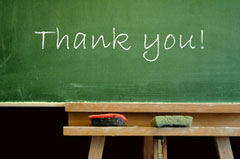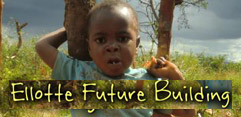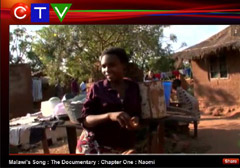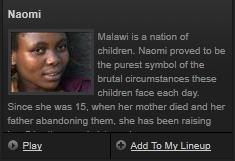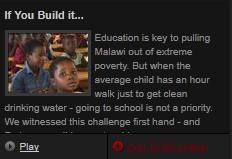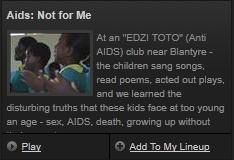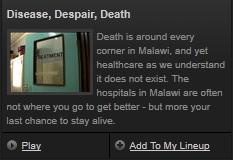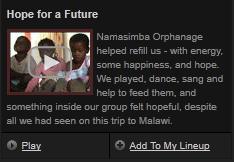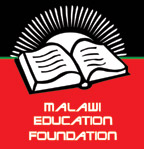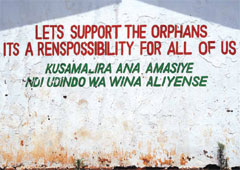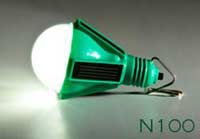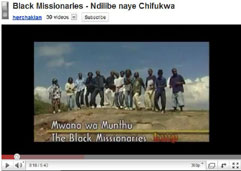

| Msani Secondary School | |
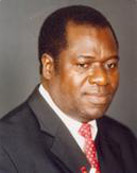 Wiseman Chijere Chirwa, BSoc Sc (Hons), MA, PhD. Professor of African Social History, Chancellor College, University of Malawi Faculty of Social Science, College Campus, Chirunga Road, P.O. Box 280, Zomba, Malawi. Headmaster, Msani Secondary School P.O. Box 5, Nkhata Bay, Malawi phone: +265 999 958 302 +265 888 351 491 Physical location Msani Village, Chintheche Road, GVH Chilerawana, Nkhata Bay. Currently 72 students, will increase to 125 by January. We have over 50 admission applications on file Covering which grades: Forms 1 to 4 |
About Msani School Msani Secondary School is located near Nkhata Bay, Malawi. The school was founded in 2008 by Professor Wiseman Chijere Chirwa in consultation and cooperation with local communities. The site used to be a local community primary school established in 1978. In 2006 Professor Chirwa negotiated with the local communities to renovate an old primary school building and erect additional buildings to start a community-based secondary school where students pay part of the cost of their education. The renovations started in November 2008, marking the beginning of a project single-handedly funded by an individual. Classes commenced in October 2010. What do you need at your school that you have difficulty getting? |
An excerpt from a recent newspaper article, Malawi While at Queen's Wiseman took some courses in Latin American history and politics and African politics. He returned to Malawi in 1992 after 5 years to rejoin the University of Malawi where he is now a Professor of African Social Studies. Dr. Wiseman? How did the school idea come about? My greatest shock when I came back to the village after my 5 year stay in Canada was that the school facilities and the general education conditions were pretty much the same as they were when I went to school in the area more than 20 years in the past. The school structures were still substandard. Some children were still learning under the same Mango trees I learnt under. They were still repeating Standard 8 because they could not get selected to secondary school. Much as new and additional primary schools had been built in the area, there were no secondary schools. Walking distances to the nearest secondary schools were between 8 and 14 Kms. So I decided I should make a contribution. I told myself, "If I start, then a few years from now another person follows, and more in future, this area will transform…I grew up here, went to school here, I know what it means to struggle for education. I went through it. I know it all. And if I have made it, with just a little support, any other kid from the area can do it. So why not give them a change?" |
|
An interview with Professor Wiseman regarding expenses for Msani School
How much does a term cost? Equivalent of US$53 Are there 3 terms in a calendar year?
Yes, which means US$159 a year. What does a uniform cost?
About US$20 for boys and US$25 for girls, excluding school shoes which cost about US$ US$26 in shops that sale them. Wishlist for lab equipment, tools and chemicals?
I do not have the list readily available with me. I would have to source it from the Headteacher or the Education Office. They have separate lists for specific science subjects: Agriculture, Biology, Chemistry, and Physical Science. What do you need for the lab and approximate budget?
A lab would cost about US$20,750 ie equipment and tools. The chemicals' and other consumerables' budget is US$1,700.00 per term or US$5,200 per year. Donated computers? lets chat about if it is reasonable to ship computers from Canada/USA. Should they be "Windows ready"? or can the operating system be installed at the school?
Whichever. I am not sure about the difference in the cost. My guess is that they would be cheaper sourced from outside because one would take advantage of the periodic sales, clearance sales, negotiated prices for educational purposes, donations from institutions and individuals, etc. Having them windows ready is even better much as they can be locally installed. From my experience in the University and other educational institutions is that equipment donation turns out to be much cheaper than local sourcing. If we purchased computers in Malawi - impossible or good idea? It can be done but I think the cost would be much higher than sourcing them from South Africa or other places. It depends on the numbers involved. If it is just one or two, may be up to 3, it would probably be cheaper sourcing them internally, but 5 or more would be cheaper sourced externally. A complete set of computer/hard drive/cpu costs about US$2,275. Minimum requirement for a computer/hard drive/cpu. I believe 10 to 15 terminals would be ideal because the classes are likely to be huge from next year. What are you budgeting for the girl's hostel? Structure/beds etc.
Since I already have some construction materials, the structure, beds, mattresses for a 50-bed facility would come to about US$35,000.00. Food facilities, etc?
Not more than US$9,500 for 50 girls for 14 weeks (full term). Since the students pay for these, the cost is transferred to them. How many students?
We estimate 50 girls At what grade levels? Forms 1 to 4 What would be the costs/fees per term per student for board and room?
Equivalent of US$185 or US$555 per academic year. Library approximate cost for building? Since I already have some construction materials, the remaining budget is about US$17,500. Cost of books (required texts plus references for about 240 students, which is the school's full capacity) is US$12,000. Cost of additional classroom block with 4 rooms? Based on US$10,100. Electricity - cost of transformer and installation? US26,500. Are their additional costs to wire the school? computer rooms, etc or was this done during construction?
I have the required electrical wiring items. What would be needed would be the labour and possibly additional cables for the computers. I would estimate these at US1,500. |
|
 |
 |
Visit our associate's websites! Volunteer for projects in Africa |
 |
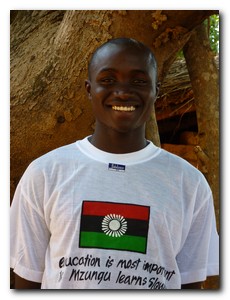 education is most important education is most importantthe Mzugu learns slowly |
|
The Malawi Education Foundation
is tax exempt under section 501 (c) (3) of the Internal Revenue Code


